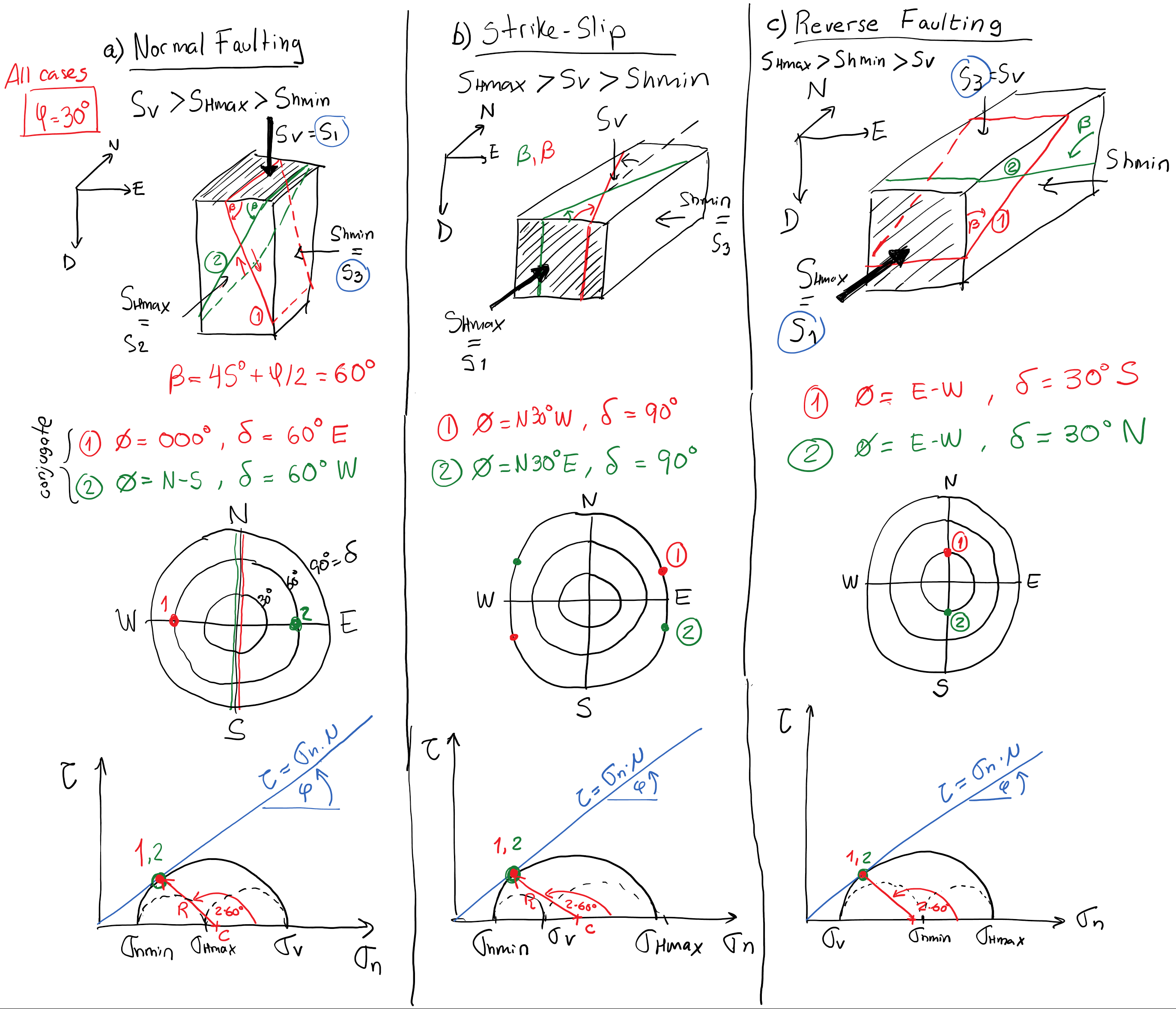Next: Determination of normal and Up: Frictional strength of faults Previous: Stress and faulting regimes Contents
The ideal orientation of a hydraulic fracture is a plane perpendicular to the minimum principal stress 



 and
and  ,
,
 ,
,
 from the plane perpendicular to
from the plane perpendicular to 
 |
PROBLEM 5.1: Find the ideal orientation of a hydraulic fracture and faults (shear fractures) at a location subjected to the following state of stress and conditions:
 is a principal stress
is a principal stress
 is N60
is N60 W
W
 = 30
= 30 .
.
SOLUTION
First, recognize the planes of 





![\includegraphics[scale=0.75]{.././Figures/split/6-IdealFracP1.pdf}](img535.svg)
A hydraulic fracture would be perpendicular to 




Faults will also depend on the friction angle. In this case, the failure angle is:

 going from the plane of
going from the plane of  to the plane of
to the plane of  .
Thus, the strike of the two possible faults is
.
Thus, the strike of the two possible faults is
 and the dips are
and the dips are
 SE and
SE and
 NW.
NW.

PROBLEM 5.2: Find the ideal orientation of a hydraulic fracture and faults (shear fractures) at a location subjected to the following state of stress and conditions:
 is a principal stress
is a principal stress
 is 010
is 010
 = 40
= 40 .
.
SOLUTION
First, recognize the planes of 





![\includegraphics[scale=0.75]{.././Figures/split/6-IdealFracP2.pdf}](img541.svg)
A hydraulic fracture would be perpendicular to 




Faults will also depend on the friction angle. In this case, the failure angle is:

 going from the plane of
going from the plane of  to the plane of
to the plane of  .
Thus, the strikes of the two possible faults are
.
Thus, the strikes of the two possible faults are
 and
and
 , the dip is
, the dip is
 .
.
